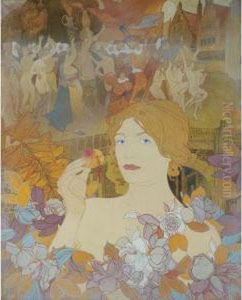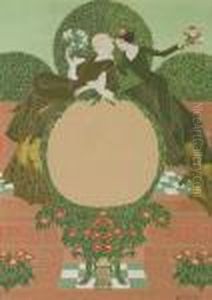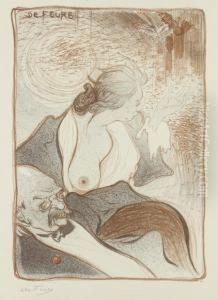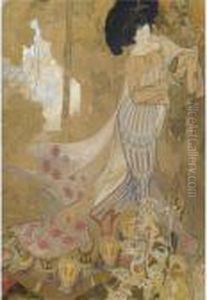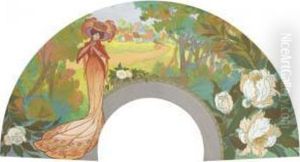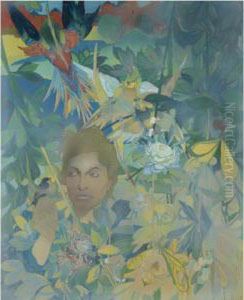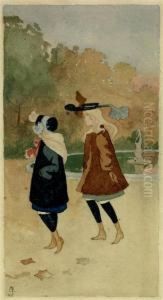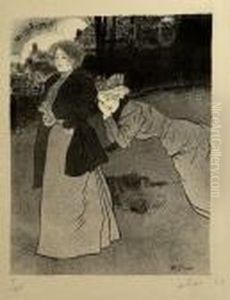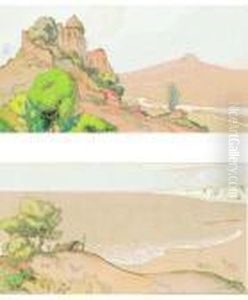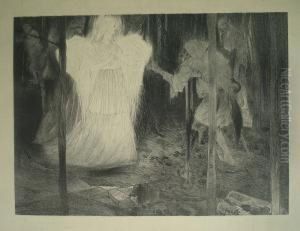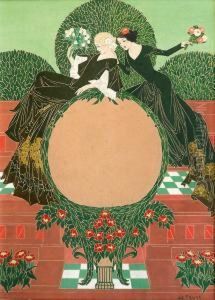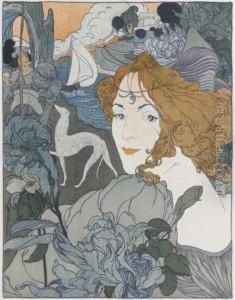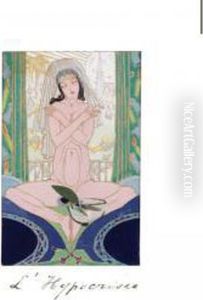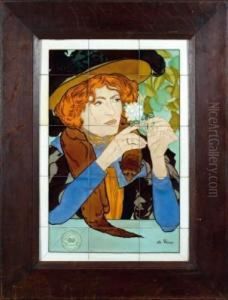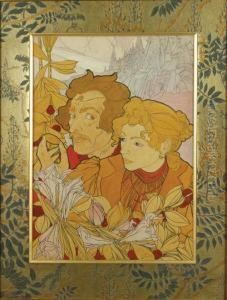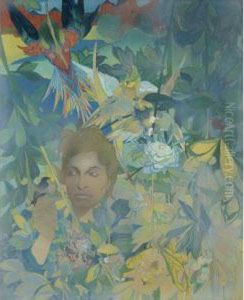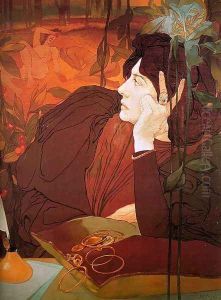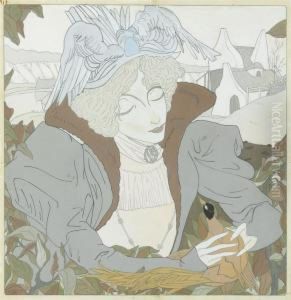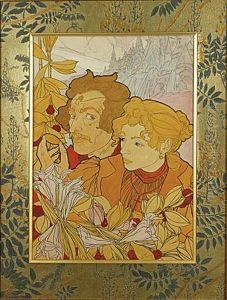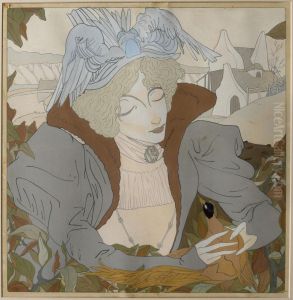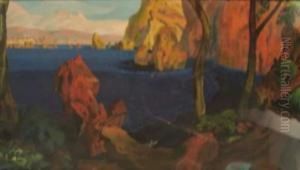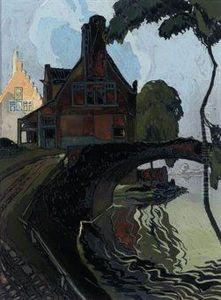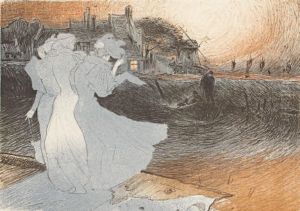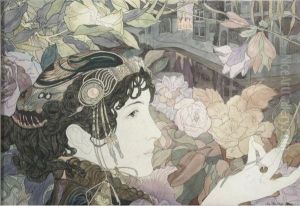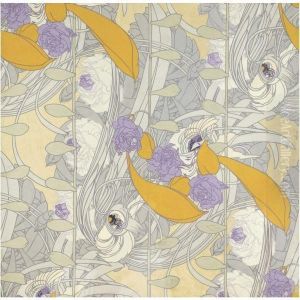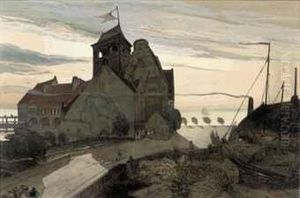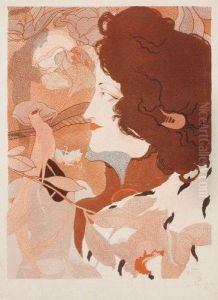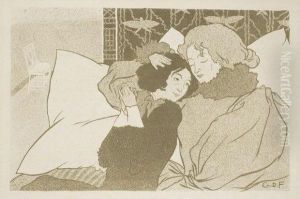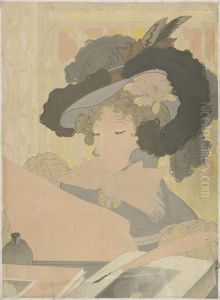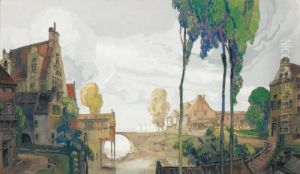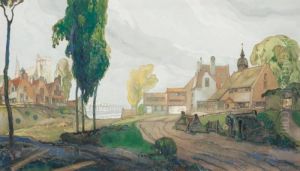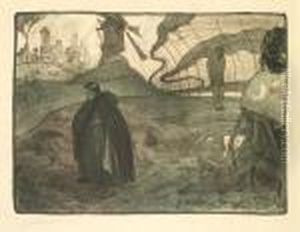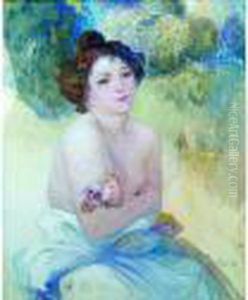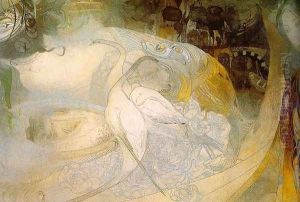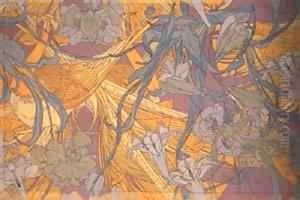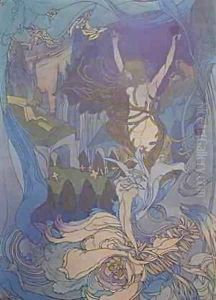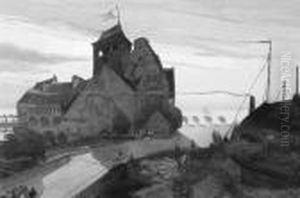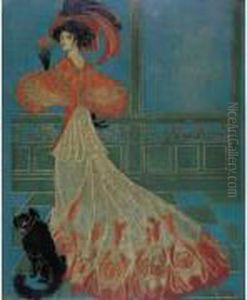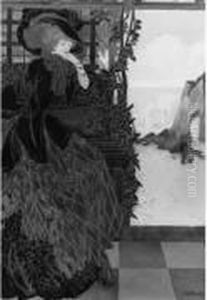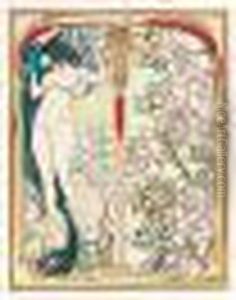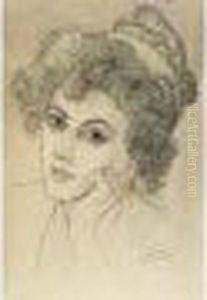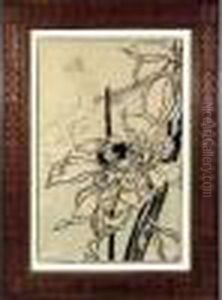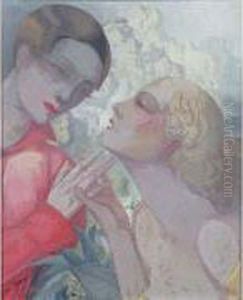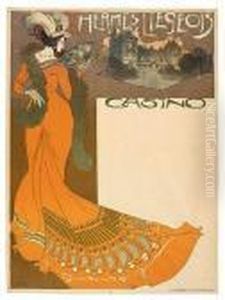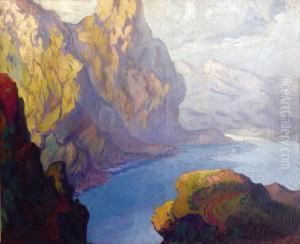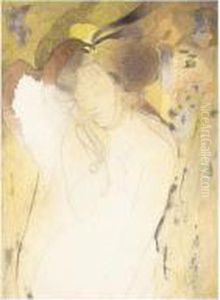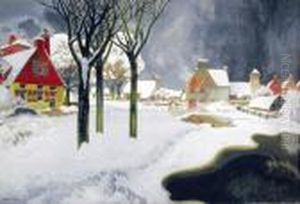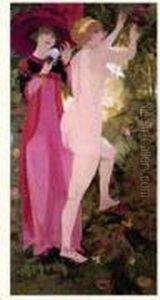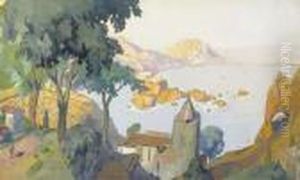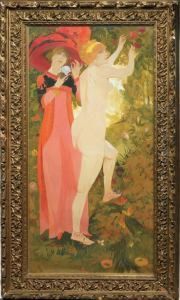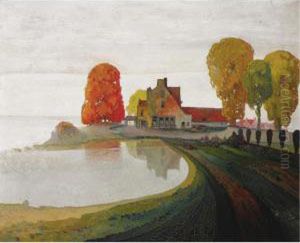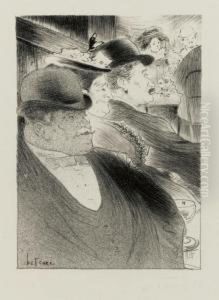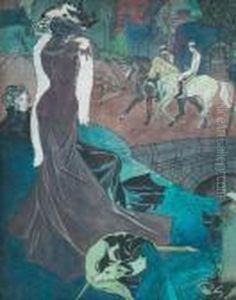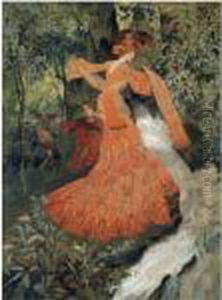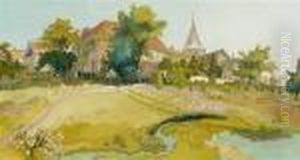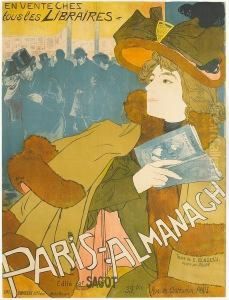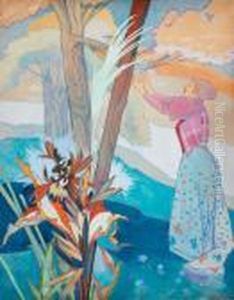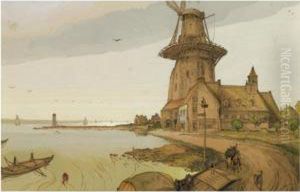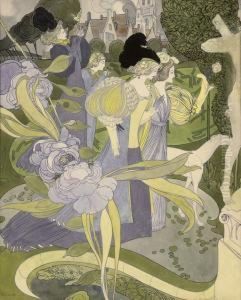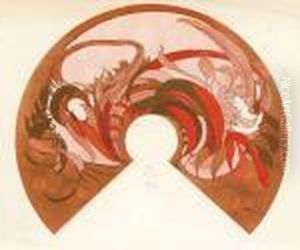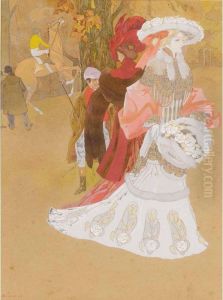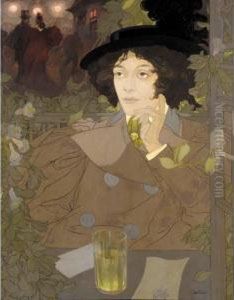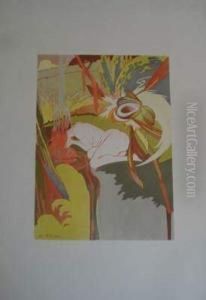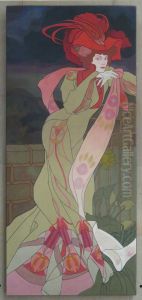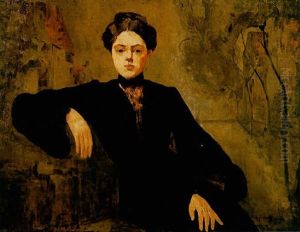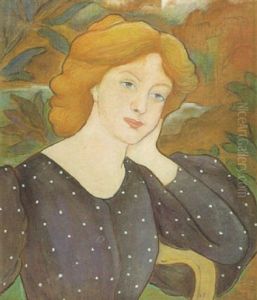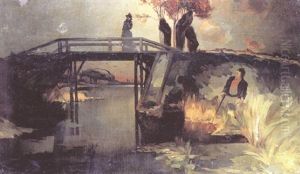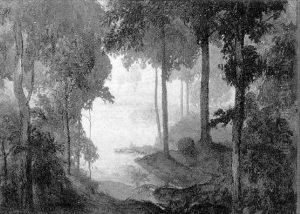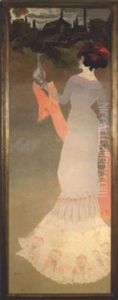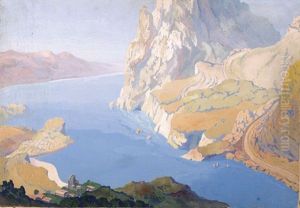Georges de Feure Paintings
Georges de Feure, born Georges Joseph van Sluijters on September 6, 1868, in Paris, was a French painter, theatrical designer, and decorator who played a pivotal role in the Art Nouveau movement. His works are distinguished by their dreamlike quality and often feature themes of beauty and decadence.
De Feure's father was Dutch, and his mother was Belgian, which contributed to the diverse influences in his art. Initially, he began his career in the arts without any formal training; however, his passion and talent soon led him to become one of the prominent figures in the Parisian art scene. De Feure never adhered strictly to one artistic discipline. Instead, he explored various mediums, including painting, furniture design, glasswork, and graphic arts.
During the late 19th and early 20th centuries, Paris was the cultural hub of Europe, and Art Nouveau was at its peak. De Feure became part of this vibrant movement, which emphasized organic designs, flowing lines, and incorporation of natural forms. He was associated with the famous Maison de l'Art Nouveau, run by art dealer Siegfried Bing, who was instrumental in promoting the Art Nouveau style. De Feure designed furniture and decorative objects for the gallery, contributing to the aesthetic of the movement.
In addition to his decorative work, de Feure's paintings often depicted elegant figures, allegorical subjects, and were imbued with a sense of melancholy and sensuality. His style was marked by a use of soft colors, delicate lines, and a blending of realism with symbolism.
The artist also contributed to the field of stage design, creating sets and costumes for various productions. His theatrical designs reflected his artistic style, incorporating the same fluid lines and attention to detail seen in his other works.
Despite his success during the Art Nouveau period, Georges de Feure's work fell into relative obscurity after World War I, as the style became less popular and was eventually overshadowed by new art movements. Nevertheless, his contribution to the Art Nouveau movement remains significant.
Georges de Feure's personal life was marked by a series of romantic relationships and a struggle with alcoholism. These personal challenges, as well as the changing tastes in art, led to a decline in his later years. He died in poverty on November 26, 1943, in Paris, but his work continued to be appreciated by art collectors and historians, and it has seen a resurgence of interest in recent times as part of the broader revival of Art Nouveau.
